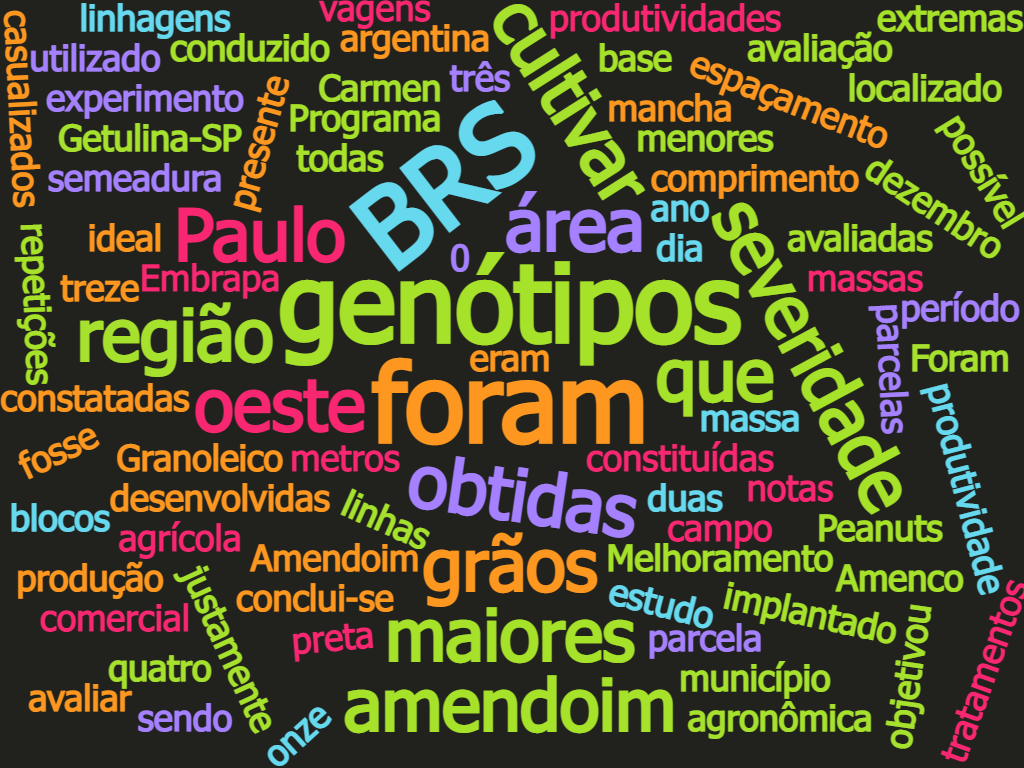Agronomic evaluation of peanut genotypes in the western region of the state of São Paulo
DOI:
https://doi.org/10.52755/sas.v2iedesp1.141Keywords:
Arachis hypogaea L., Improvement Program, ProductivityAbstract
ABSTRACT
This work aimed at the agronomic evaluation of peanut genotypes in the western region of the state of São Paulo. The experiment was conducted in the commercial production area of "‹"‹Amenco Peanuts, located in the city of Getulina-SP, in the western region of the state of São
Paulo, in the agricultural year 2020/21. It was implemented on December 17, 2020, outside the ideal sowing period, together so that it was possible to evaluate the productive potential and the agronomic characteristics of the genotypes under extreme conditions. The experimental design used was in randomized blocks, with four replications. The treatments were thirteen peanut genotypes, eleven lines (2091 OL, 2133 OL, 1253 OL, 2131 OL, 2110 OL, 2136 OL, 2010 OL, 2101 OL, 2056 OL, 1876 OL and 2250 OL), one cultivar (BRS 423 OL), all developed by Embrapa's Peanut Improvement Program and an Argentine cultivar by El Carmen (Granoleico). The plots consisted of two lines of three meters in length, with a spacing of 0.90 m and plot area of "‹"‹5.4 m2. Black spot severity, 100 grain mass and pod yield were evaluated. Based on the present field study, it is concluded that the lowest severity scores were obtained with the BRS 423 OL and 2091 OL genotypes. The largest masses of 100 grains were found with 2010 OL and 1253 OL. Finally, the highest yields were obtained with 2010 OL, 2110 OL, 2101 OL, BRS 423 OL, 2136 OL, 1253 OL and 2133 OL.
Downloads

Downloads
Published
How to Cite
Issue
Section
License
Copyright (c) 2021 Marcel Rodrigo Bazanella, Jair Heuert, Maxuel Fellipe Nunes Xavier, Nelson Dias Suassuna, Taís de Moraes Falleiro Suassuna

This work is licensed under a Creative Commons Attribution-NonCommercial-ShareAlike 4.0 International License.
Autores concordam com os seguintes termos:
a) Os autores mantêm os direitos autorais e concedem à revista o direito de primeira publicação, com o trabalho simultaneamente licenciado sob a LicençaAttribution-NonCommercial-ShareAlike 4.0 International, que permite o compartilhamento do trabalho com reconhecimento da autoria e publicação inicial na Revista SAS. A licença permite o uso, a distribuição e a reprodução irrestrita, em qualquer meio, desde que devidamente citada a fonte. Essa licença permite também que outros remixem, adaptem e criem a partir do seu trabalho para fins não comerciais, desde que atribuam a você o devido crédito e que licenciem as novas criações sob termos idênticos.
b) Não cabe aos autores compensação financeira a qualquer título, por artigos ou resenhas publicados na South American Sciences.
c) Os conceitos expressos nos artigos publicados na South American Sciences são de inteira responsabilidade de seus autores.








